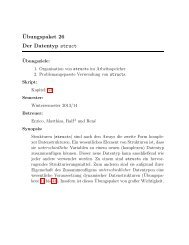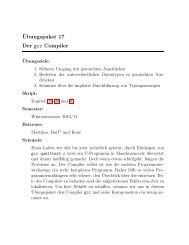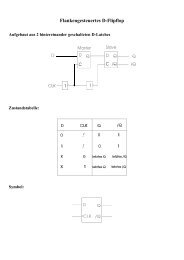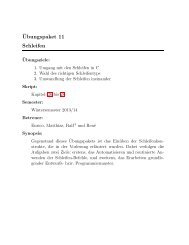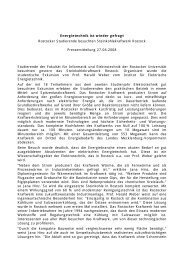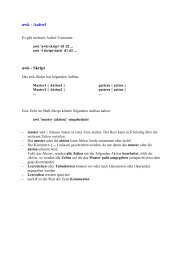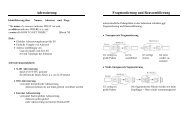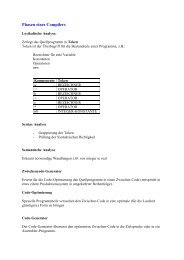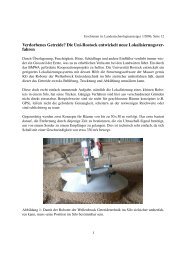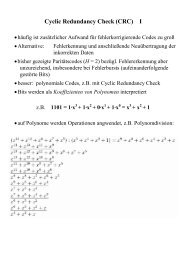An Automatic ESL Synthesis Approach by Design Space
An Automatic ESL Synthesis Approach by Design Space
An Automatic ESL Synthesis Approach by Design Space
Create successful ePaper yourself
Turn your PDF publications into a flip-book with our unique Google optimized e-Paper software.
1:10 • J. Keinert et al.<br />
Fig. 3. (a) Depiction of the PPM Sink actor from Figure 1 consisting of two input ports i 1 and i 2 ,a<br />
set of actions and guards and the state machine that determines its communication behavior. The<br />
transitions of the state machine are annotated with activation pattern/action pairs. (b) shows the<br />
source code of the action f newFrame .<br />
action f newFrame shown in Figure 3(b) derives the number of pixels in the frame.<br />
The corresponding result is stored in the functionality state of the actor, that is,<br />
missingPixels is updated for later usage <strong>by</strong> the g lastPixel guard. Lines (2) and (3)<br />
show how to access the first and second token in the SYSTEMOC FIFO connected<br />
to input port i 2 in random order. The size of the random access area corresponds<br />
to the predicate annotated to the transition of the FSM and amounts two for<br />
actor port i 2 .<br />
After completion of the f newFrame action, the FSM changes into the write state.<br />
There, the frame is read pixel <strong>by</strong> pixel from port i 1 and written to an unmodeled<br />
output, for example, in the simulation phase to a ppm image file. Each execution<br />
of the f processPixel action modifies the functionality state <strong>by</strong> decrementing the<br />
number of pixels remaining in the frame. The end of a frame is detected via<br />
the guard g lastPixel , which evaluates to true for the last pixel of a frame. In this<br />
case, the state machine reverts to the start state.<br />
6. AUTOMATIC ACTOR SYNTHESIS<br />
After modeling the considered application in SYSTEMOC, the next step in our<br />
design flow consists in the automatic generation of hardware modules for some<br />
or all actors. This allows for rapid prototyping, as explained in Section 8, and<br />
for extraction of performance parameters in form of action execution times<br />
and required chip areas. The latter ones are required for evaluation of each<br />
implementation during automatic design space exploration.<br />
The actor hardware synthesis applies state-of-the-art behavioral synthesis<br />
tools. These behavioral synthesis tools typically do not support all possible SystemC<br />
language constructs, for example, recursion, dynamic memory allocation,<br />
and thus usage of dynamic data structures is not allowed.<br />
The actor hardware synthesis itself consists of three steps, namely (i) transformation<br />
of SYSTEMOC actors into SystemC modules, (ii) behavioral synthesis<br />
using Forte <strong>Design</strong> Systems Cynthesizer, and (iii) generation of Verilog gatelevel<br />
netlists using Synplify Pro from Synplicity [Synplicity].<br />
The actor transformation into SystemC modules is required in order to abstain<br />
from the abstract SYSTEMOC syntax, which cannot be directly processed<br />
ACM Transactions on <strong>Design</strong> Automation of Electronic Systems, Vol. 14, No. 1, Article 1, Pub. date: January 2009.




